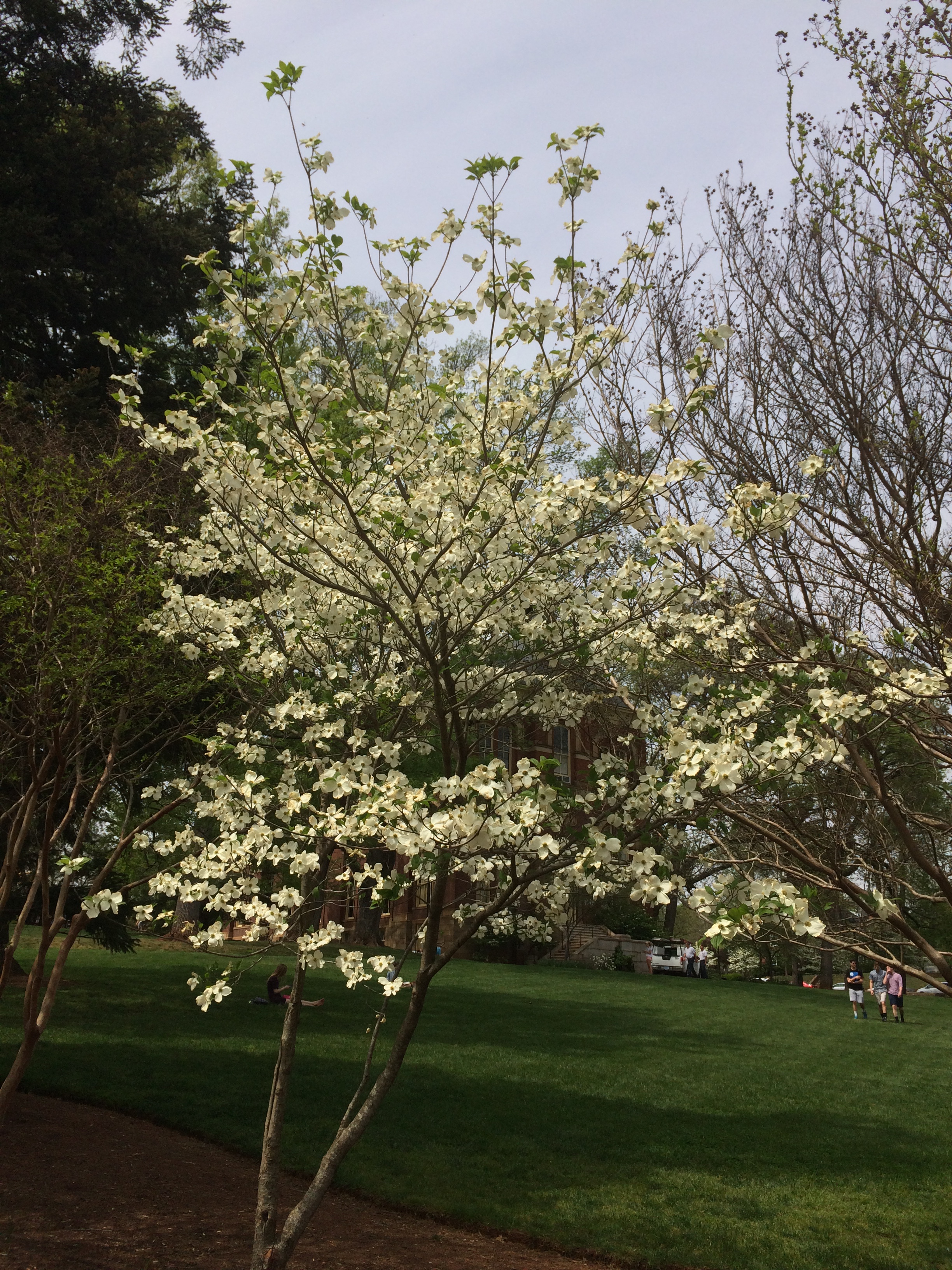I recently returned from an auto trip to visit family and friends in Ohio, Virginia, and Maryland. I love driving alone in a car on the open highway or on country roads. It’s like being in a hermitage on wheels, with quiet when I want it, music when I want it, and wonderful opportunities to rejoice in the natural beauty of North America. Especially in the Easter season, it’s impossible to miss the natural metaphors everywhere around you – leaves budding, blossoms opening, grass growing, dandelions rejoicing in their ability to defeat the homeowner’s campaign to kill them.

As I drove further south, spring became more and more obvious, with dogwoods and redbuds, apple and cherry blossoms all along the road and tulips and azaleas lining residential streets. How can one possibly ignore this insistent burst of life that comes upon us in spring? My trip was almost like being in a time machine – just a hint of buds on the trees in Toronto and everything in full leaf by the time I arrived in Richmond.
The Easter season can be like a road trip. It is liminal time, a wrinkle in time as Madeleine L’Engle called it – the place and the time where heaven and earth meet, “when heaven is wedded to earth” as it’s expressed so beautifully in the Exultet. The word liminal comes from the Latin limina meaning “threshold.” It is a time pregnant with possibility, and it presents us with a choice. We can go more deeply into our life with God, receiving that love and reconciliation which the risen Christ offers to us. Or we can turn away from it – scared by the possibility of change, of conversion, of newness – and go back into our old ways.
Easter is our Christian passover, the time when Jesus crossed the threshold from death to life, when we, through the waters of baptism, pass with him into new life just as the Israelites passed through the Red Sea out of slavery into the promised land. That is why baptism has been central to the Easter celebrations from the early church till now. Easter is not only our personal passover, when we move from old slaveries into freedom in Christ. It is also the passover of the church as the body of Christ, called to renewal, to new ways of being the church and new ways of sharing the good news of our passover.
There is a good reason that the Easter season lasts 50 days. The angel who met the women looking for Jesus at the empty tomb said to them, “He has risen; He is not here . . . go, tell His disciples and Peter, ‘He is going ahead of you to Galilee; there you will see Him, just as He told you.'” There are times like that in all our lives, when liturgical time does not seem to coincide with the reality of our lives, when we are still grieving on Easter morning while others are rejoicing, when we are looking for Jesus and have not found him. But the promise of the resurrection is that he will meet us, in our own Galilee, in God’s own time. Like the road trip from Toronto to Virginia, from winter to spring, it sometimes takes both time and distance for us to travel before we can rejoice in meeting the risen Christ.
As I drove back to Toronto two weeks later, the weather got colder and cloudier and the trees looked more barren than in Virginia. But I woke up the next morning to the most dramatic sunrise I have ever seen — a sunrise that would be impossible without the clouds. Spring will come to Toronto. It is coming. And Jesus will meet me in Galilee.
The Rev. Sr. Constance Joanna Gefvert is Vocations Coordinator for the Sisterhood of St. John the Divine, an Anglican priest in the Diocese of Toronto, and an adjunct faculty member at Wycliffe College, Toronto School of Theology.


